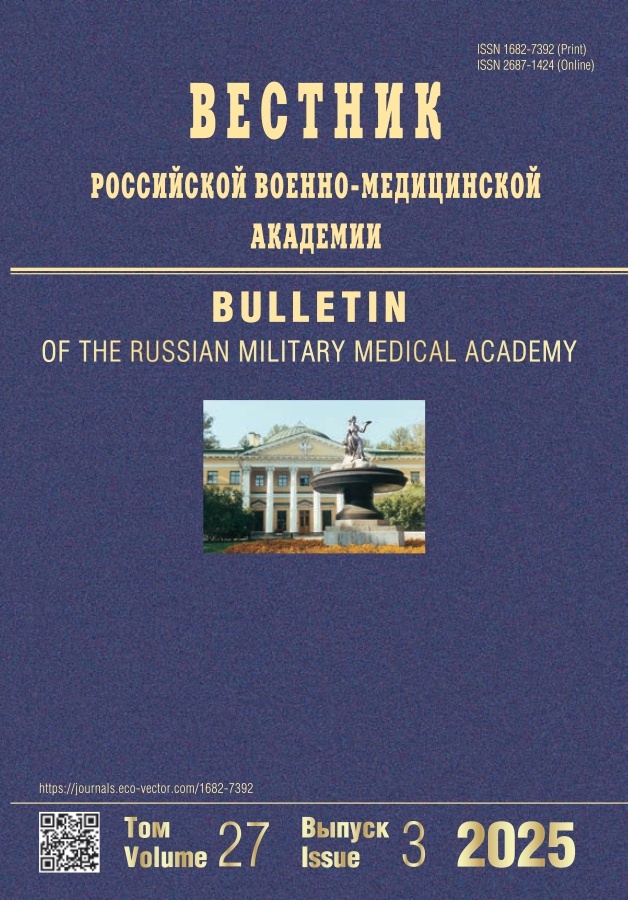The effectiveness of the narcological service in the Russian Federation in terms of target indicators
- Authors: Esina K.M.1, Skripov V.S.1,2, Kochorova L.V.2, Klyukovkin K.S.2, Pronina A.V.2, Semenova N.V.1
-
Affiliations:
- National Medical Research Center for Psychiatry and Neurology named V.M.Bekhterev
- First Saint Petersburg State Medical University named acad. I.P. Pavlova
- Issue: Vol 22, No 2 (2020)
- Pages: 134-137
- Section: Articles
- URL: https://journals.rcsi.science/1682-7392/article/view/50059
- DOI: https://doi.org/10.17816/brmma50059
- ID: 50059
Cite item
Full Text
Abstract
The analysis of the effectiveness of the narcological services based on the primary and general incidence rates, as well as target indicators considered in the Health Care Development program, is presented. A decrease in both the general and primary incidence of mental and behavioral disorders associated with the use of psychoactive substances in 2013-2018 was revealed. This decrease can be explained by the increasing role of primary prevention and regulation of the consumption of psychoactive substances at the state level, as well as a change in the order of dispensary monitoring of persons with mental disorders and (or) behavior disorders associated with the use of psychoactive substances. An analysis of the target indicators characterizing the activities of the drug treatment service showed that remission rates among patients with alcoholism and drug addiction increase and remain above target values. At the same time, the proportion of patients with alcoholism and drug addiction hospitalized repeatedly during the year exceeds the target values and amounts to 26,3 and 28,2%, respectively. This fact may be associated with insufficiently effective continuity in the work of the outpatient and inpatient stages of treatment of patients with drug addiction and alcoholism. The shares of people included in outpatient and inpatient medical rehabilitation programs also increased - the growth was 5 and 5,7%, respectively. The effective work of the service, in terms of rehabilitation, is also indicated by the fact that the proportion of patients who successfully completed medical rehabilitation programs both in outpatient and inpatient settings tend to increase. In general, the incidence of drug abuse disorders and indicators characterizing the work of the drug treatment service are determined by the strong negative impact of drug addiction and alcoholism on the demographic and economic situation in society.
Keywords
Full Text
##article.viewOnOriginalSite##About the authors
K. M. Esina
National Medical Research Center for Psychiatry and Neurology named V.M.Bekhterev
Author for correspondence.
Email: kmusaeva@yandex.ru
Russian Federation, Saint Petersburg
V. S. Skripov
National Medical Research Center for Psychiatry and Neurology named V.M.Bekhterev; First Saint Petersburg State Medical University named acad. I.P. Pavlova
Email: kmusaeva@yandex.ru
Russian Federation, Saint Petersburg; Saint Petersburg
L. V. Kochorova
First Saint Petersburg State Medical University named acad. I.P. Pavlova
Email: kmusaeva@yandex.ru
Russian Federation, Saint Petersburg
K. S. Klyukovkin
First Saint Petersburg State Medical University named acad. I.P. Pavlova
Email: kmusaeva@yandex.ru
Russian Federation, Saint Petersburg
A. V. Pronina
First Saint Petersburg State Medical University named acad. I.P. Pavlova
Email: kmusaeva@yandex.ru
Russian Federation, Saint Petersburg
N. V. Semenova
National Medical Research Center for Psychiatry and Neurology named V.M.Bekhterev
Email: kmusaeva@yandex.ru
Russian Federation, Saint Petersburg
References
Supplementary files







